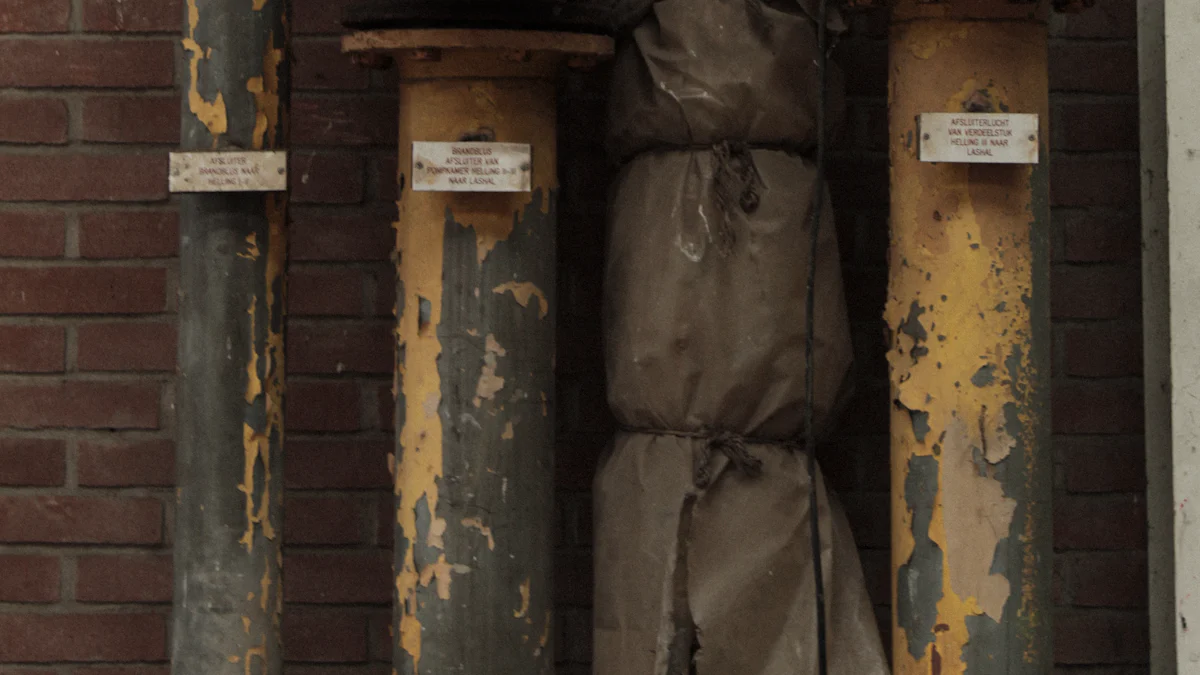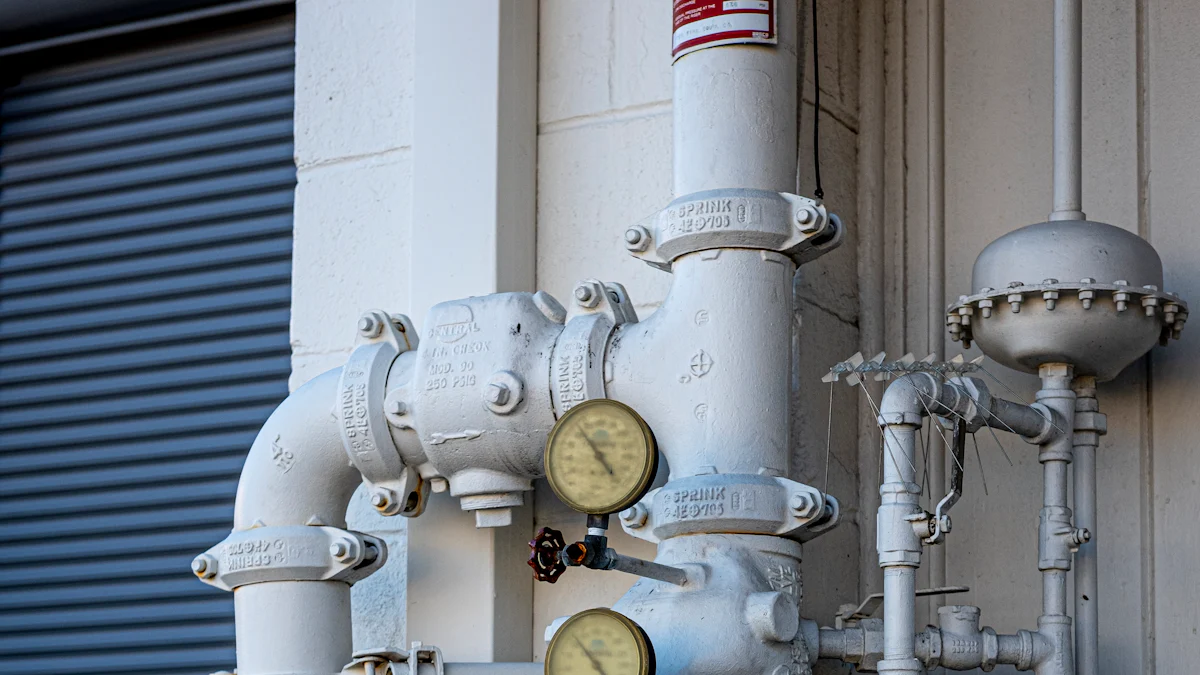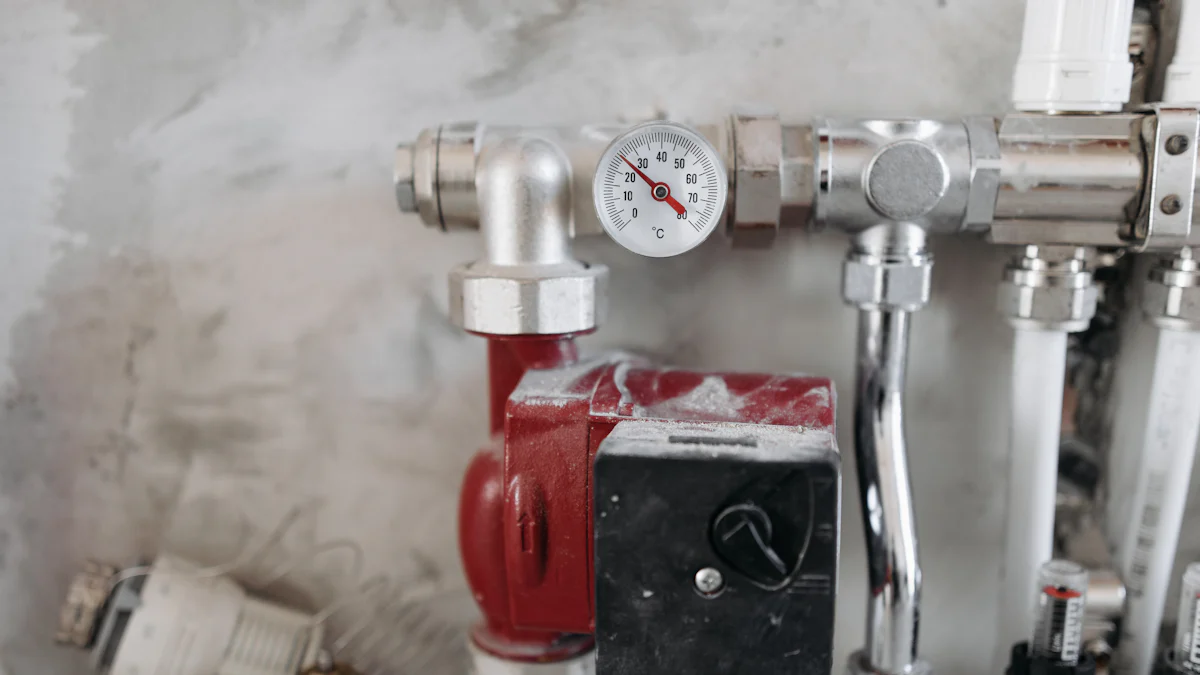
Pilot-operated valves revolutionize high-pressure system management by offering precise control with minimal physical effort. These valves utilize a pulse valve pilot to enable remote actuation, enhancing operational efficiency. Products like the GOYEN type pulse valve pilot repair kits and the GPC10 pulse valve armature plunger FP25 FP40 exemplify the reliability and innovation required for demanding industrial applications.
Key Takeaways
- Pilot-operated valves give accurate control in high-pressure systems. They reduce manual work and make operations more efficient.
- Remote control lets workers operate valves from far away. This improves safety and lowers danger in risky areas.
- These valves save money by cutting labor and repair costs. They last longer because they experience less damage over time.
How pilot-operated valves work

Overview of the pilot mechanism
Pilot-operated valves function by utilizing a smaller pilot valve to control the operation of a larger main valve. This mechanism relies on pressure differentials to open or close the main valve, reducing the need for direct manual force. The pilot valve directs a small amount of fluid or air to manipulate the main valve, making it highly efficient for managing high-pressure systems. This design minimizes wear and tear on components, ensuring long-term reliability. By separating the control mechanism from the main valve, pilot-operated systems achieve greater precision and responsiveness.
Role of the pulse valve pilot in high-pressure control
The pulse valve pilot plays a critical role in regulating high-pressure systems. It acts as the control unit that triggers the main valve's operation. In industrial applications, the pulse valve pilot ensures consistent performance by maintaining precise pressure levels. This component is particularly effective in systems requiring rapid actuation, such as dust collection or pneumatic operations. Its ability to handle high-pressure environments with minimal energy consumption makes it indispensable in modern engineering solutions. The pulse valve pilot also enhances system safety by providing reliable control under demanding conditions.
Benefits of remote actuation and automation
Remote actuation and automation represent significant advantages of pilot-operated valves. These features allow operators to control valves from a distance, reducing the need for physical presence near potentially hazardous systems. Automation further streamlines operations by enabling valves to respond to pre-programmed commands or real-time sensor inputs. This capability improves efficiency and reduces human error. In industries like oil and gas or water treatment, remote actuation and automation enhance productivity while ensuring worker safety. The integration of technologies like the pulse valve pilot into automated systems exemplifies the innovation driving modern industrial processes.
Pilot-operated valves vs. manually operated valves
Limitations of manually operated valves in high-pressure systems
Manually operated valves often struggle in high-pressure environments. Operators must exert significant physical effort to open or close these valves, especially when dealing with large systems. This limitation can lead to inefficiencies and delays in operations. Additionally, manually operated valves lack the precision required for controlling high-pressure systems. Small adjustments can be challenging, resulting in inconsistent performance. In hazardous environments, manual operation increases risks to personnel, as workers must remain in close proximity to the system. These drawbacks make manually operated valves less suitable for modern industrial applications.
Efficiency, safety, and cost advantages of pilot-operated valves
Pilot-operated valves offer superior efficiency by utilizing a smaller pilot mechanism to control the main valve. This design reduces energy consumption and minimizes manual intervention. The inclusion of components like the pulse valve pilot ensures precise control, even in high-pressure systems. Safety improves significantly, as operators can manage these valves remotely, avoiding exposure to dangerous conditions. From a cost perspective, pilot-operated valves reduce labor requirements and maintenance expenses. Their ability to handle demanding applications with minimal wear extends their operational lifespan, providing long-term savings.
Maintenance and operational differences
Maintenance requirements for pilot-operated valves differ significantly from manually operated ones. The pilot mechanism, including the pulse valve pilot, simplifies the operation of the main valve, reducing mechanical strain. This results in fewer breakdowns and lower maintenance costs. In contrast, manually operated valves experience more wear due to direct physical force, leading to frequent repairs. Operationally, pilot-operated valves integrate seamlessly with automated systems, enhancing productivity. Their ability to respond to real-time inputs ensures consistent performance, making them indispensable in industries requiring precision and reliability.
Applications showcasing the advantage of pilot-operated valves

Use in industrial systems with high-pressure requirements
Pilot-operated valves excel in industrial systems that demand precise control under high-pressure conditions. Industries such as chemical processing and power generation rely on these valves to regulate fluid flow efficiently. Their ability to handle extreme pressures without requiring significant manual effort makes them indispensable. The pilot mechanism ensures smooth operation, even in systems with rapid pressure fluctuations. By integrating components like the pulse valve pilot, these valves maintain consistent performance, reducing downtime and enhancing productivity. Their robust design also minimizes wear, ensuring long-term reliability in demanding environments.
Applications in oil and gas, water treatment, and manufacturing
The oil and gas industry frequently employs pilot-operated valves to manage complex processes like drilling and refining. These valves provide precise control over high-pressure pipelines, ensuring safety and efficiency. In water treatment facilities, they regulate the flow of water and chemicals, maintaining optimal system performance. Manufacturing sectors benefit from their ability to automate processes, improving production speed and accuracy. The versatility of pilot-operated valves allows them to adapt to diverse operational needs, making them a preferred choice across multiple industries.
Scenarios where pilot-operated valves outperform manual valves
Pilot-operated valves outperform manual valves in scenarios requiring remote operation or automation. For instance, in hazardous environments, operators can control these valves from a safe distance, reducing risks. Systems requiring rapid and frequent adjustments benefit from the quick response of pilot-operated valves. Their ability to integrate with automated systems ensures consistent performance, even in complex operations. Unlike manual valves, which demand physical effort and close proximity, pilot-operated valves offer unmatched efficiency and safety. These advantages make them the superior choice for modern industrial applications.
Pilot-operated valves deliver unmatched performance in high-pressure systems. Their ability to enable remote actuation and automation enhances operational safety and efficiency. Industries such as oil and gas, water treatment, and manufacturing rely on these valves for their flexibility and reliability. While manual valves serve specific purposes, pilot-operated valves remain the superior choice for cost-effective solutions.
FAQ
What industries benefit the most from pilot-operated valves?
Industries like oil and gas, water treatment, and manufacturing benefit significantly. These valves provide precise control, safety, and efficiency in high-pressure and automated systems.
How do pilot-operated valves improve safety?
Pilot-operated valves enable remote operation, reducing the need for workers to approach hazardous systems. This feature minimizes risks and enhances workplace safety in demanding environments.
Are pilot-operated valves cost-effective?
Yes, they reduce labor and maintenance costs while extending operational lifespan. Their efficiency and reliability make them a cost-effective solution for high-performance applications.
Post time: Jan-27-2025



